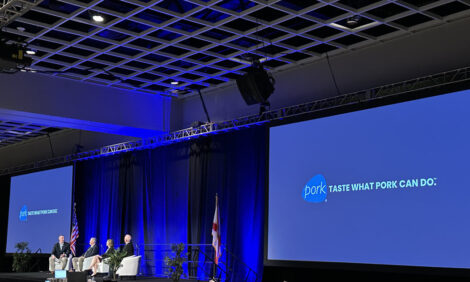



<i>Terra Incognita</i> for the UK pig breeding herd
This month in his regular monthly report, Dr John Strak looks at the weakness of the UK pig breeding herd and suggests this weakness could be a great opportunity to rebuild the herd.|
Dr John Strak

Dr Strak's views on the UK and global pig markets are produced in Whole Hog every fortnight. For more details click the link at the foot of the article. |
The thrust of this report is that the UK pig breeding herd is at its weakest state since records began but the flip side of this coin is that this means that there are great opportunities to rebuild the herd.
I don’t want to dwell too much on what is needed to start that rebuilding or I might be accused of being too pessimistic but there is certainly a major challenge ahead if the industry is to recover to anything like full strength.
The DEFRA June census figures were published in provisional form in September (but finalised figures will not be available until February 2002 at the earliest!)
The provisional data confirmed my expectations that the herd size would stabilise at c.580,000 sows as producers held on to sows rather than sell them at a major loss in the FMD-affected cull sow market or through the welfare disposal scheme.
The loss of the export market for cull sows directly affected cull sow prices with values falling by two thirds and sow retention was probably the only tactic available to producers short of going out of business altogether.
Difficulties in sourcing new breeding stock/gilts would also have encouraged this reaction.
The result is that there is now a much higher than normal proportion of older sows in the UK breeding herd and conversely, a much lower proportion of gilts.
The implications of this for 2002 pigmeat production and producers’ unit costs are not insignificant.
Gilt retentions for this June were recorded by the census at 59,000. That’s about 30%down on the normal retention rate for the 1990s and nearly 25%down on last year (which was,of course, a poor year for the industry).
Sow slaughterings were reduced from a normal weekly figure of about 7000 sows to under 4000 sows during the 7-8 months of the FMD outbreak. So, the herd has got older and less productive and there is a large overhang of older sows in the production pipeline.

Chart 1 illustrates how much gilt retentions have fallen back. In fact, there have now been seven successive periods in which gilt retentions have shown negative growth. This is unprecedented.
Sow slaughterings (as shown in Chart 2) are also showing charting unknown waters. The trend line has now reached a point which is almost half the previously observed minimums. This is terra incognita.

The question is,where do we go from here? Well, the answer to that depends very much on where pig prices go. On that issue I have made my view known in previous Strak Reports – this is not the time to expect an upturn in the pig price cycle.
And, given that unit costs of production will be increasing because of the overall increase in the average herd of the herd, and PMWS/PDNS are yet to be conquered I am not optimistic about the UK pig herd’s ability to rebuild from retained profits.
Indeed, with the resumption of exports yet to have an impact on pig prices and the bureaucracy surrounding FMD still having an impact on day-to-day production and marketing there is no sign of profit at all.
About the best that can be hoped for as Christmas approaches is sympathy from the banks and feed suppliers and a stable home market as we enter the New Year.
2002 will definitely be a year for rebuilding and regenerating the herd (unless there is a catastrophic reduction in global pigmeat supplies).
The rebuilding process could be seen as an opportunity by some - but equally it will be a very difficult challenge for others.
Source: Whole Hog, November 2001







